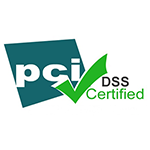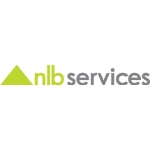© 2025 Next Level Business Services Inc. All Rights Reserved.
Diversity Hiring in 2025: 8 Effective Ways To Hire Diverse Talent
By NLB Services
In today’s dynamic and competitive times, diversity and inclusion have become indispensable elements of any successful organization.
Diversity hiring means that your team corroborates and reflects the society around you. Meaning that your staff should consist of a variety of different types of people, from different backgrounds and experiences. Diversity comes in terms of gender, experience, geography, socio-economic levels, race, religion, sexual orientation, and so on.
Research shows that diverse teams drive innovation, boost performance, enhance creativity, and problem-solving skills, and enhance employee engagement and satisfaction.
However, despite these benefits, many companies continue to struggle with making their workforce diverse. Challenges involved in transitional recruitment tactics such as unconscious bias in hiring, sourcing of diverse candidates, retention and inclusion, and resistance to change hinder the goal of organizations hiring a diverse workforce.
But with the right strategy and adopting equitable hiring practices, you can hire diverse talent for your organization and become the torchbearer of Diversity, Equity, and Inclusion (DEI) in 2024. In this blog, we will share 8 effective ways to build a diverse workforce in 2024. Let’s get started.
8 Effective Ways for Recruiting Diverse Employees
1. Set Clear Goals and Metrics
The first step is to set clear diversity goals that align with the company’s values, business objectives, and needs. For example, a goal could be to increase the representation of women in leadership from 20% to 30% by 2025. Or having a representation of a group in each team by at least one person. Another example is increasing the representation of the LGBTQ community in the team strategically.
It’s also important to identify metrics to track progress toward goals. Metrics could include percentage of underrepresented groups among new hires, promotion rates for minority groups, and retention rates. Tracking metrics ensures accountability and allows you to measure success.
2. Audit Your Recruitment Process for Bias
A thorough audit of the existing recruitment strategy and hiring process is essential to uncover any biases that may be deterring or screening out diverse candidates. Review job descriptions and qualification requirements – are any inherently biased towards certain groups?
Scrutinize the language used in job posts and branding materials – does it use inclusive terms? It should be free of gender-specific pronouns and age-neutral. Analyze sourcing strategies – are they attracting diverse applicant pools? Look at screening and shortlisting criteria – could any be discriminatory? Examine interview practices – are evaluation methods standardized and free of any bias?
By identifying biases in current processes, you can address them through updated policies and practices.
3. Expand Your Sourcing Channels
To recruit and attract more diverse candidates, you should make sure you are looking at a diverse candidate pool. Outreach traditional job boards by approaching a wider range of channels such as diverse professional associations and networks, conferences and events focused on underrepresented groups, partnering with diversity-focused employment programs, and referral bonuses to incentivize employee referrals of diverse candidates. Leverage inclusive job boards and diversity hiring websites like Diversity Jobs to get the right candidate from a diverse group.
4. Create Inclusive Job Descriptions
Adding subtle elements to your job descriptions can attract qualified and diverse talent. Ensure the language used is inclusive, gender-neutral, and devoid of non-essential skills requirements.
Focus on must-have qualifications and highlight opportunities for growth and development. Take time to see if your job description has any age or experience-biased terms. Avoid any cultural and racial or cultural bias (for example, requirement against any particular dress).
You can also state your commitment to diversity in the job description. For example, “We welcome candidates of all backgrounds and identities and believe diversity fuels innovation.” Signals like this help attract those who value inclusion.
5. Implement Blind Resume Screening
Removing identifying information from resumes during initial screening is a unique Diversity, Equality, and Inclusion or DEI recruitment best practice that can help reduce unconscious bias. This ensures candidates are evaluated based solely on skills and qualifications. You can scrub names, photos, schools, employment dates, and other potentially biasing details from the resume to promote blind resume screening.
Other effective strategies include using standardized evaluation rubrics, establishing structured interviews, and training screeners on types of biases. Taking simple steps to minimize bias during screening can help you hire a more diverse workforce..
6. Standardize Interview Processes and Use Diverse Panels
Inconsistent interview practices open the door for bias. Train your interviewers to use the same structured process for every candidate. Ask competency-based questions that objectively assess candidates’ skills and qualifications. Standardizing the interview scoring rubric is also key. Having a diverse panel of interviewers further combats bias. Varying perspectives lead to more balanced assessments of candidates.
7. Offer Unconscious Bias Training for Hiring Teams
Unconscious biases are ingrained stereotypes that can influence your hiring decisions, leading to unfair judgments and a lack of diversity in recruitment.
Even well-intentioned individuals are prone to unconscious biases. For recruiting a diverse workforce, recruiters and HR should go through regular bias training to learn how to recognize and mitigate biased assumptions. This should be reinforced with accountability through auditing and feedback.
As per HBR, having unconscious boars training at work plays a major role in controlling it. UB training seeks to raise awareness of the mental shortcuts that lead to snap judgments that are often based on race and gender about people’s talents or character.
8. Develop a Positive Candidate Experience
Each candidate’s experience during the recruitment process, even those whom you don’t hire, greatly influences the employer’s brand. Candidates who feel welcomed, respected, and fairly evaluated become ambassadors. Those who experience bias spread negative impressions. HR, during the recruitment process, should showcase the organization’s commitment to diversity and inclusion. Ensure constructive discussions, timely feedback, and overall positive gestures to make sure that candidates already feel included. Creating a thoughtful, consistent, and inclusive candidate experience enables attracting and hiring qualified individuals from diverse backgrounds.
Conclusion
Achieving diversity hiring goals requires a strategic, organization-wide effort. From setting goals to auditing processes to training teams, organizations must follow DEI hiring best practices shared above to attract, source, hire, and retain diverse talent.
While the path to attracting diverse talent is no easy feat, sticking to these 8 DEI recruitment practices provides the best opportunity to create a diverse and inclusive workforce. By getting it right, companies will enhance innovation, decision-making, financial performance, and reputation – building stronger organizations that reflect the rich diversity of their employees and communities. Organizations should always strive for an inclusive culture and diverse workforce as it brings multiple benefits to the table. Try incorporating the tips shared here and see how your organization’s recruitment and talent acquisition game goes in 2024.
Talent Solutions








